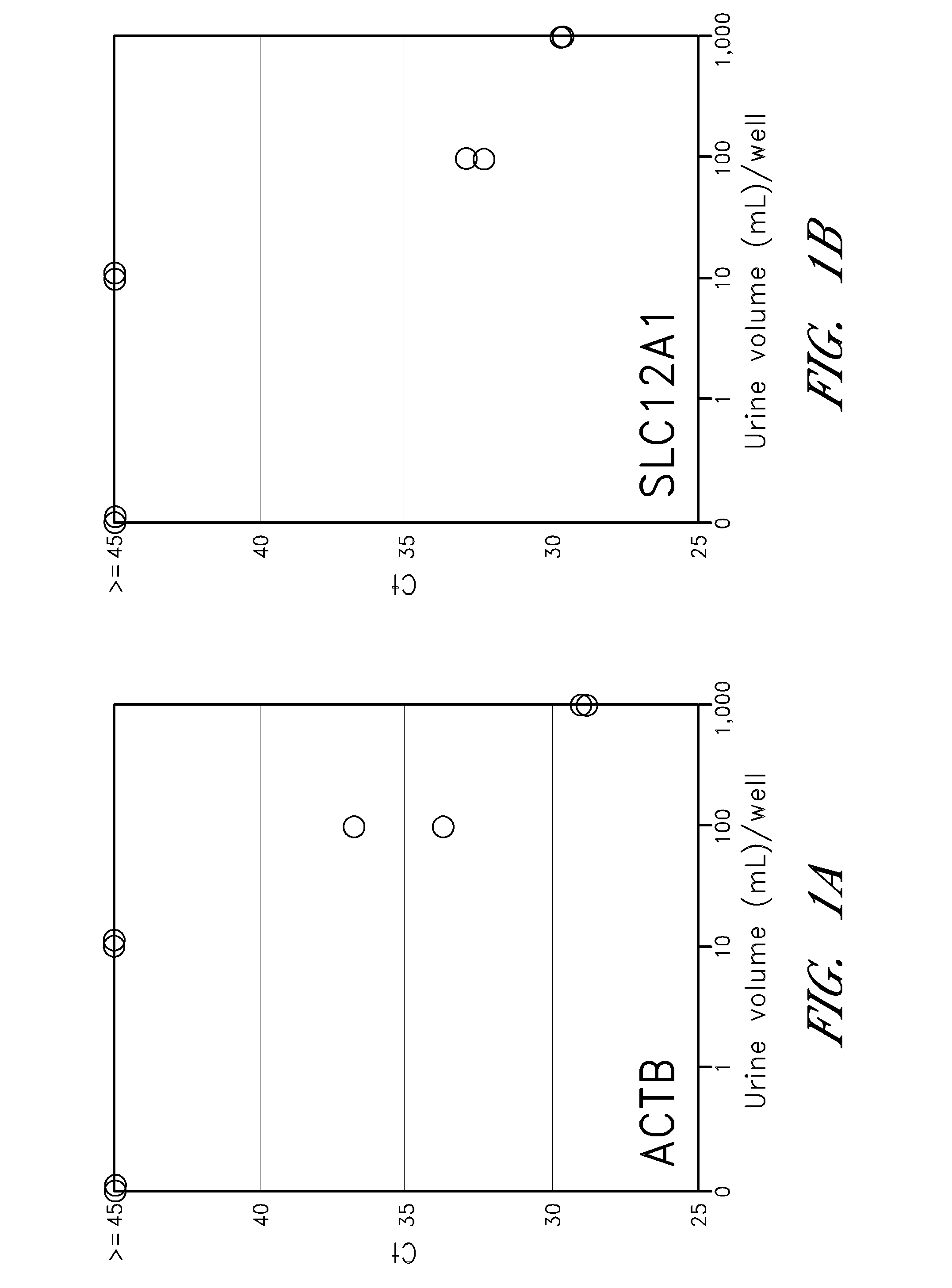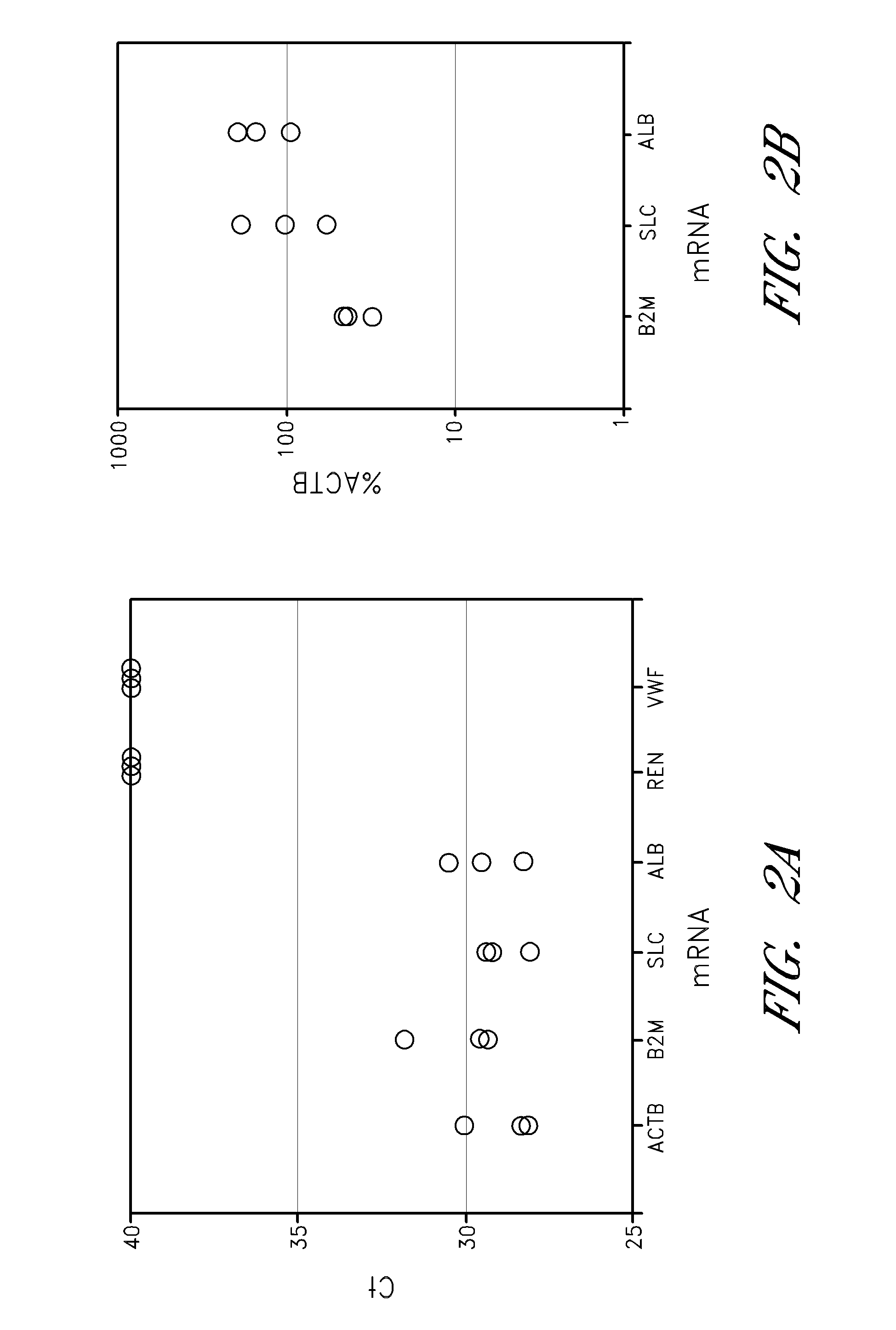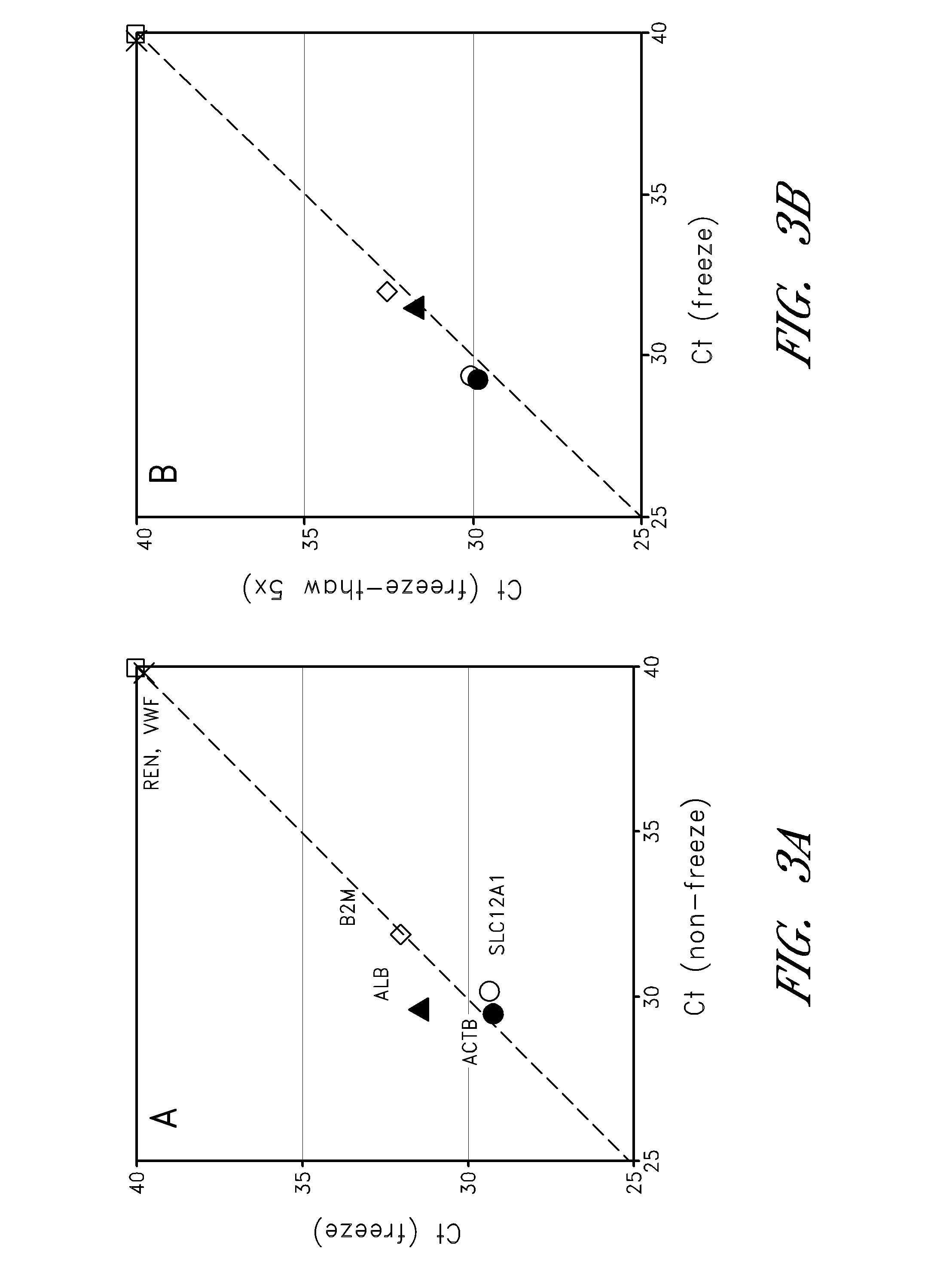Methods for characterizing kidney function
a kidney function and characterization technology, applied in the field of kidney disease diagnosis, can solve the problems of increasing the amount of kidney damage, the sensitivity of the sensitivity of the sensitivity of the sensitivity of the sensitivity of the sensitivity of the sensitivity of the sensitivity of the sensitivity of the sensitivity of the sensitivity of the sensitivity of the sensitivity of the sensitivity of the sensitivity of the sensitivity of the sensitivity of the sensitivity of the sensitivity of the sensitivity of the sensitivity of th
- Summary
- Abstract
- Description
- Claims
- Application Information
AI Technical Summary
Benefits of technology
Problems solved by technology
Method used
Image
Examples
example 1
Characterization of Kidney Function Through Analysis of Urine RNA-Associated Vesicles
[0072]Given ready access to potentially large quantities of patient urine samples, use of urine as a diagnostic sample is common. Most current diagnostic tests measure solutes excreted in urine, or measure urine production rate, in order to characterize kidney function, or loss thereof due to damage or disease. However, the existence of vesicles present in the urine which are associated with RNA species is utilizes here to make a sensitive and specific diagnostic analysis of kidney function based on isolation and amplification of kidney specific markers.
Methods
[0073]Human urine samples (triplicate) from 3 healthy donors were applied to the filter membranes of a vesicle capturing filterplate (as described above) with vacuum, followed by centrifugation at 2000×g for 5 min. After centrifugation, 50 μL of Lysis Buffer was added to each well which were then incubated at 37° C. for 10 minutes to lyse the ...
example 2
Analysis of Urine RNA-Associated Vesicles to Determine Post-Transplant Kidney Function
[0084]Urine samples were collected from 10 adult healthy donors (3 different samples from a single donor, for a total of 12 samples) and 68 post-kidney transplantation patients. Post-transplant patients were further categorized by the values of serum creatinine (28 patients were ≦1.2 mg / dl and 40 patients were >1.2 mg / dl). Serum creatinine is a commonly used measure of kidney function, as creatinine is a muscle-breakdown waste product that should be filtered (and removed from the bloodstream) by the kidney. Normal serum creatinine levels range from about 0.8 to about 1.2 mg / dl. Increased creatinine levels indicate a reduction in kidney function (e.g., reduced filtration efficiencies). Urine samples were processed as described above.
[0085]As shown in Table 3, more than 75% of all samples, regardless of their category (e.g., control, normal or high creatinine) detected ACTB. These data indicate the d...
PUM
| Property | Measurement | Unit |
|---|---|---|
| diameter | aaaaa | aaaaa |
| size | aaaaa | aaaaa |
| diameter | aaaaa | aaaaa |
Abstract
Description
Claims
Application Information
 Login to View More
Login to View More - R&D
- Intellectual Property
- Life Sciences
- Materials
- Tech Scout
- Unparalleled Data Quality
- Higher Quality Content
- 60% Fewer Hallucinations
Browse by: Latest US Patents, China's latest patents, Technical Efficacy Thesaurus, Application Domain, Technology Topic, Popular Technical Reports.
© 2025 PatSnap. All rights reserved.Legal|Privacy policy|Modern Slavery Act Transparency Statement|Sitemap|About US| Contact US: help@patsnap.com



